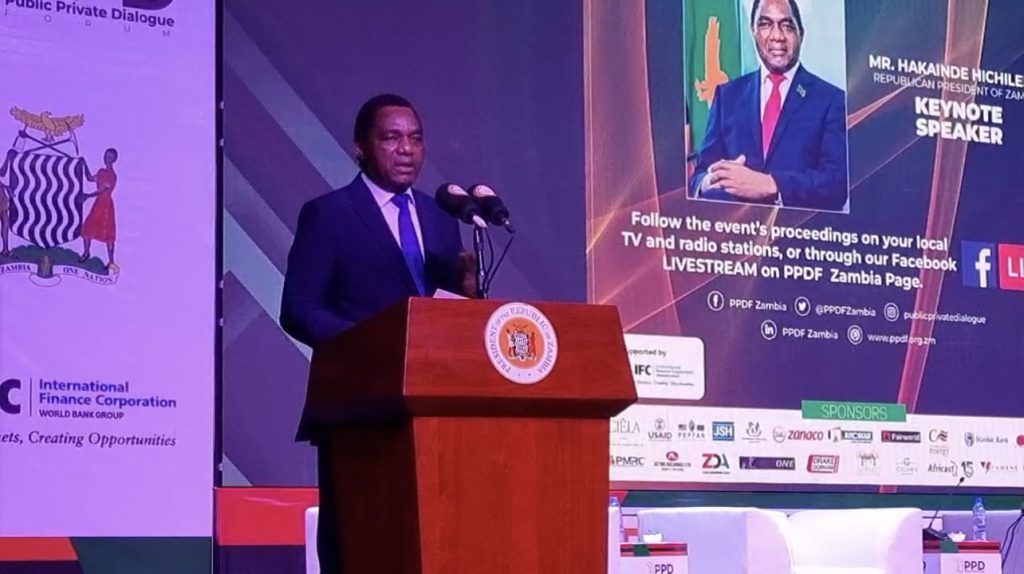The head of state in Africa’s second largest copper hotspot Zambia has debt restructure on high priority as he seeks to attract capital flows into the Southern African nation. President Hakainde Hichilema in his keynote speech at the second private sector day of the Private Public Dialogue in Lusaka, echoed the importance of expediting the debt restructure process in attracting capital whose flows have slowed in the last quarter as investors remain on the fence despite increased goodwill.
“Yesterday, I was flying from Chingola with the minister of finance and I said to him, you and I should not be sleeping over the conclusion of the Zambia debt restructure issue because you can see its effect on the economy and overall sentiment. I was listening to one of the speakers that said there is goodwill out there, capital providers are coming through financing, but in the last 2 or so months, the latter part of this year, there is sort of a slow down. One of the reason for that slow down is because questions are being asked about when the Zambia debt restructuring will be put to bed,” President Hichilema said. Before debt restructuring, the country was to pay $7.5 billion of debt service over the 10 years but after this restructure is bedded, we will be paying $750 million.
Annually without debt reorganisation over the next decade we should be paying $75 million a year but with debt restructuring we will have more headroom to allow for investment in trade, economic growth, social and education sector, he said.
Hichilema highlighted the risks of not closing debt restructure as potential erosion of gains accrued so far which to the naked eye is driven by exchange rate only but is driven by many other factors hence the need for us to work harder and continue with positive sentiments. The red metal producer is currently in the labyrinth of private debt restructure after suffering a set back when the bilateral creditors and the International Monetary Fund expressed reservations at a proposed dollar bond restructure poroposal on G20 common framework comparability benchmarks. The bilateral creditors argued that bondholders would be getting a third more in repayments in the period that Zambia was on an extended credit facility.
Protracted debt restructure has seen the red metal producer face currency depreciation which continues to breed cost push inflationary effects sending inflation double digits higher at 12.8% for November and further triggered aggressive monetary tightening by the central bank in 100 basis points higher policy rate to 11% and 5.5% higher cash reserves to 17% in November. Private sector pulse as measured by the Markit Economics purchasing managers index recently rebounded into expansion at 50.6 after three straight months of contraction as input inflation, high petroleum prices and lack of liquidity persist as homogenous themes inpacting the private sector.
Following a recent article mission visit by the Washington based lender earlier in the quarter, Zambia awaits the IMF board sitting outcome on 21 December on the fate of the $184 million third disbursement to cushion in part its fiscal pressures. The copper producer recently had its local currency long term issuer rating upgraded by Fitch to CCC+ while its foreign currency remains in default until dollar bond portion of debt is fully reorgnised to support a rating upgrade.
The Kwacha Arbitrageur

